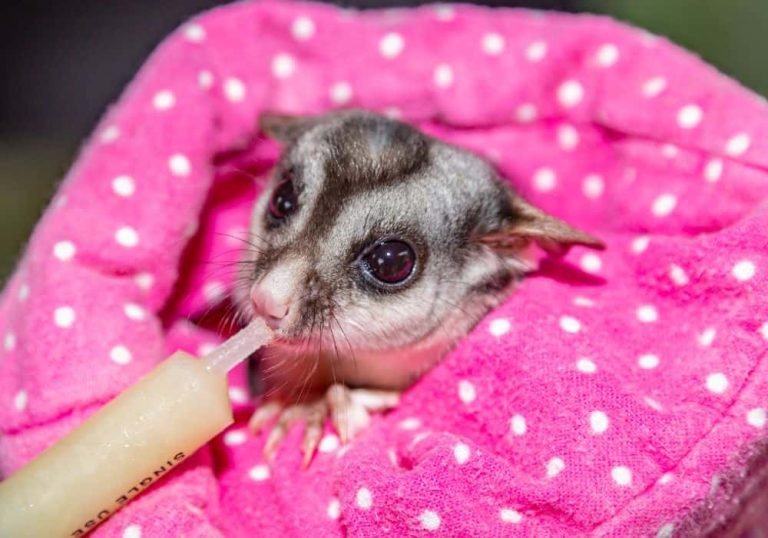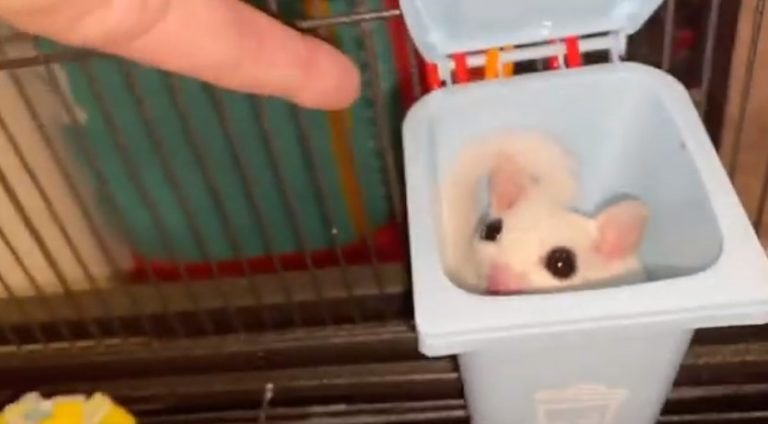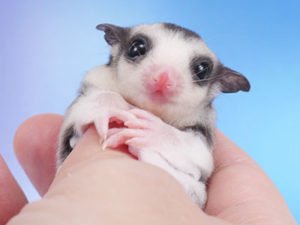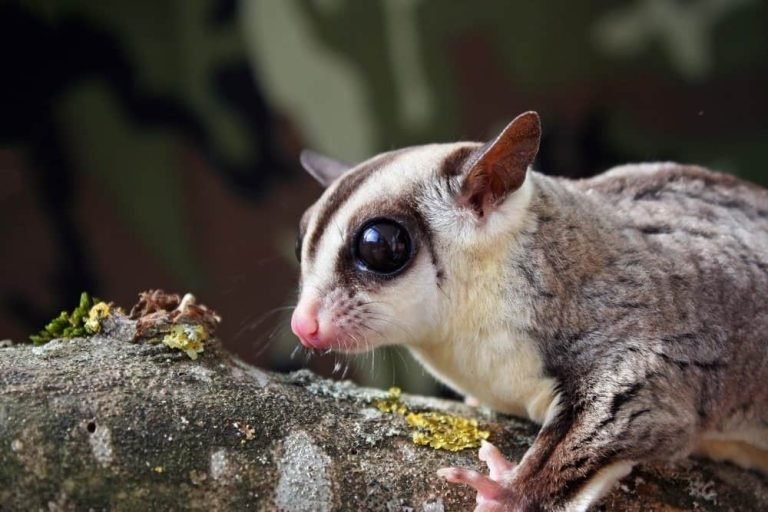Understanding Sugar Glider Pouching VS Carrying Behavior Insights
Have you ever wondered how sugar gliders transport their young? It’s not as simple as just carrying them around. These adorable creatures have unique behaviors called pouching and carrying that play a crucial role in their natural instincts. To properly care for and bond with sugar gliders, it is essential to understand these behaviors.
Differentiating between pouching and caring behaviors allows us to grasp the intricacies of their parenting style. While carrying involves holding the young on the outside of the body, pouching refers to the act of placing them inside a specialized pouch. This knowledge helps us provide appropriate care by mimicking their natural environment.
Understanding these behaviors goes beyond basic knowledge; it strengthens our connection with these remarkable animals. By appreciating their innate instincts, we can create a nurturing environment that promotes trust and companionship.
So, let’s delve into the fascinating world of sugar glider pouching and carrying behavior, uncovering insights that will enhance our understanding and enable us to become better caregivers for these enchanting creatures.
The Protective Nature of Sugar Glider Pouches
Sugar gliders are known for their unique behavior of pouching, which serves as a safe haven for these adorable creatures. Let’s delve into the purpose and significance of sugar glider pouches, understanding how they provide comfort and security to these little sugar bears.
- Exploring the purpose of sugar glider pouches as a safe haven: Pouches play a vital role in providing a cozy retreat for sugar gliders. These small blankets or bags act as their sanctuary, offering a sense of security and warmth akin to their natural habitat.
- Understanding how pouches provide comfort and security for sugar gliders: Sugar gliders have an innate need to feel protected, and their bonding bag or sleeping pouch fulfills this requirement perfectly. It allows them to snuggle up inside, creating a comforting environment that mimics the safety they experience in the wild.
- Examining the role of pouches in protecting young joeys: Pouches are essential for safeguarding baby sugar bears, commonly referred to as joeys. The mother carries her precious offspring within her pouch, ensuring their safety during development. This protective enclosure shields them from potential dangers while allowing easy access to nourishment through the mother’s teats.
Pouches serve various purposes beyond merely providing shelter:
- They help regulate body temperature by trapping heat close to the gliding membrane.
- Pouches offer privacy when needed, allowing sugar gliders to retreat from external stimuli.
- Scent is important for bonding among sugar gliders, and pouches retain familiar smells that promote social interaction.
- Insects often find their way into cages or nest boxes; however, having a designated sleeping pouch minimizes encounters with unwanted critters.
- Some owners even use specialized bonding pouches that allow them to carry their furry companions around comfortably.
Bonding with Sugar Gliders: Successful Strategies
Establishing trust through gentle handling techniques
Understanding their natural behavior is crucial. One of the key aspects of building a strong connection is establishing trust through gentle handling techniques. By approaching your sugar glider with patience and care, you can create an environment where they feel safe and secure.
Here are some tips to help you establish trust:
- Approach your glider slowly and avoid sudden movements that may startle them.
- Use a soft voice when interacting with your glider to create a calming atmosphere.
- Offer treats or favorite foods as a way to associate positive experiences with your presence.
- Gradually introduce physical contact by allowing your glider to sniff and explore your hand before attempting to hold them.
Building a bond through regular interaction and socialization
To strengthen the bond between you and your sugar glider, regular interaction and socialization are essential. These activities not only provide opportunities for bonding but also allow for mental stimulation and exercise.
Consider incorporating the following into your routine:
- Spend time each day playing with your glider using toys specifically designed for their enjoyment.
- Allow supervised gliding sessions in a safe, enclosed space to encourage natural behaviors.
- Create a consistent schedule for feeding, grooming, and playtime to establish a sense of routine.
By engaging in these activities consistently, you will foster an environment where your sugar glider feels comfortable and connected.
Using positive reinforcement to create a strong connection with your sugar glider
Positive reinforcement is an effective tool in the bonding process with sugar gliders. By rewarding desired behaviors, you can reinforce the connection between you and your pet.
Here are some ideas on how to use positive reinforcement effectively:
- Offer treats or praise when your sugar glider responds positively to training cues or commands.
- Use clicker training techniques paired with rewards to reinforce desired behaviors.
- Incorporate interactive games and puzzles that stimulate your glider’s natural instincts.
By consistently using positive reinforcement, you can strengthen the bond between you and your sugar glider while also encouraging them to learn and engage in new experiences.
Insights into Sugar Glider Behavior and Handling
Recognizing common behavior patterns exhibited by sugar gliders
- Sugar gliders have unique behaviors that can be easily recognized with some observation.
- They are social creatures and often form close bonds with their owners or other sugar gliders.
- One common behavior is pouching, where they carry objects or even their young in a special pouch on their belly.
- Pouching is more commonly seen in female sugar gliders, as it provides a safe space for their joeys.
Understanding their communication cues, such as vocalizations and body language
- Sugar gliders communicate through various vocalizations and body language cues.
- They may make different sounds like chirps, barks, or hisses to express different emotions or needs.
- Pay attention to their body language, such as fluffed fur indicating fear or aggression.
- Tail movements can also convey messages; a wagging tail suggests excitement while a still tail indicates calmness.
Tips for safely handling sugar gliders to avoid stress or injury
- Approach them gently and calmly to avoid startling them.
- Use slow movements and speak softly to help them feel at ease.
- Offer your hand for them to climb onto rather than grabbing them forcefully.
- Support their entire body when holding them to prevent any accidental falls or injuries.
- Avoid squeezing too tightly as sugar gliders have delicate bones and can get injured easily.
By understanding the behavior of these fascinating pets, you can provide better care and create a bond based on trust. Remember to give them enough space and treat them with kindness. With time and patience, you’ll become familiar with the unique ways they communicate and interact with humans.
Commercial Diets for Sugar Gliders: Options and Considerations
Overview of commercially available diets suitable for sugar gliders
There are several commercially available diets that can provide them with the necessary nutrition. These diets are specifically formulated to meet the dietary requirements of sugar gliders in captivity. Some popular options include:
- [Brand A]: This diet consists of a balanced mix of fruits, vegetables, and proteins, providing a wide variety of nutrients.
- [Brand B]: Known for its high-quality ingredients, this diet focuses on providing a well-rounded meal plan for sugar gliders.
- [Brand C]: Designed to mimic their natural diet in the wild, this option offers a blend of fruits, insects, and nectar.
Evaluating nutritional requirements when choosing a diet plan
To ensure your sugar glider receives proper nutrition from its captive diet, it’s important to consider their specific dietary needs. Here are some key factors to evaluate when selecting a commercial diet:
- Protein content: Sugar gliders require protein-rich foods such as insects or lean meats to support their growth and overall health.
- Vitamin and mineral balance: Look for diets that provide essential vitamins like A, D, E, and calcium-rich minerals to maintain strong bones and immune function.
- Fiber content: A balanced amount of fiber is crucial for digestive health in sugar gliders.
Considering pros and cons of different commercial diet options
Each commercial diet has its own advantages and disadvantages. Here are some factors to consider when making your decision:
- Convenience: Some diets may come in pre-packaged portions or have easy-to-follow feeding instructions.
- Cost: Different brands vary in price range depending on the quality and quantity provided.
- Availability: Ensure that the chosen brand is readily available at local pet stores or online retailers.
It’s also worth noting that while commercial diets offer convenience, supplementing with fresh foods like fruits and vegetables can enhance your sugar glider’s diet.
Preventing Pouch Problems in Sugar Gliders

Potential Issues from Improper Pouch Care
- Neglecting pouch hygiene can lead to pouch infections.
- Infections may cause discomfort and pain for sugar gliders.
Tips for Maintaining Cleanliness
- Regularly clean the pouch with a mild, sugar glider-safe detergent.
- Rinse the pouch thoroughly to remove any soap residue.
- Allow the pouch to air dry completely before returning it to the sugar glider’s enclosure.
Addressing Common Problems
- Stuck food or debris in the pouch can be uncomfortable for sugar gliders.
- Gently remove any stuck items using tweezers or your fingertips.
- Avoid pulling forcefully to prevent injury.
By understanding the importance of proper pouch care, you can help prevent issues like infections and irritations. Maintaining cleanliness is crucial, as neglecting hygiene can result in discomfort for your sugar glider. Regularly cleaning the pouch with a mild detergent and ensuring it is fully dry before use will help keep your pet healthy and happy. Addressing common problems such as stuck food or debris will minimize any potential discomfort your sugar glider may experience. Remember to handle these situations gently without causing harm. With these preventative measures in place, you can ensure that your sugar glider’s pouch remains a safe and comfortable space.
Key Takeaways on Sugar Glider Behavior and Bonding
Understanding sugar glider behavior and bonding is crucial for anyone who wants to keep these adorable creatures as pets. Here are the key takeaways from our exploration:
- The Protective Nature of Sugar Glider Pouches: Sugar gliders have a natural instinct to seek shelter in their pouches, which serve as a safe haven for them. Providing a comfortable and secure pouch is essential for their well-being.
- Bonding with Sugar Gliders: Successful Strategies: Building a strong bond with your sugar glider requires patience, time, and consistency. Regular handling, gentle interactions, and offering treats can help foster trust and create a deep connection.
- Insights into Sugar Glider Behavior and Handling: Understanding sugar gliders’ behavior patterns can help you interpret their needs better. Observing their body language, vocalizations, and social interactions will provide valuable insights into their emotions and well-being.
- Commercial Diets for Sugar Gliders: Options and Considerations: Choosing the right diet for your sugar glider is vital to ensure they receive proper nutrition. Researching commercial diets available in the market, consulting with veterinarians, and considering individual dietary requirements will help you make an informed decision.
- Preventing Pouch Problems in Sugar Gliders: Maintaining good hygiene practices is crucial to prevent pouch problems such as infections or irritation. Regularly cleaning the pouch area, providing appropriate bedding material, and monitoring any signs of discomfort are essential steps in ensuring your sugar glider’s health.
In conclusion, by understanding sugar glider behavior and bonding techniques, you can establish a strong relationship with these captivating animals while ensuring their overall well-being. Remember to provide them with a safe environment, nourishing food options, regular care routines, and lots of love.
FAQs
1.How long does it take for a sugar glider to bond with its owner?
Bonding time can vary depending on the individual sugar glider and its previous experiences. It may take several weeks or even months for a sugar glider to fully bond with its owner.
2.Can sugar gliders be potty trained?
Yes, sugar gliders can be potty trained to an extent. By providing a designated area for them to relieve themselves and consistently reinforcing positive behavior, you can encourage them to use the desired spot.
3.Are sugar gliders noisy pets?
Sugar gliders are generally quiet animals, but they do make some vocalizations such as chirping or barking. These sounds are usually part of their communication with other gliders and should not cause excessive noise issues.
4.How often should I clean my sugar glider’s pouch?
It is recommended to clean your sugar glider’s pouch at least once a week. However, if you notice any signs of odor or dirt buildup, more frequent cleaning may be necessary.
5.Can I keep multiple sugar gliders together?
Sugar gliders are social animals and thrive in groups. Keeping multiple gliders together is beneficial for their well-being as long as they are properly introduced and have enough space to live comfortably.







